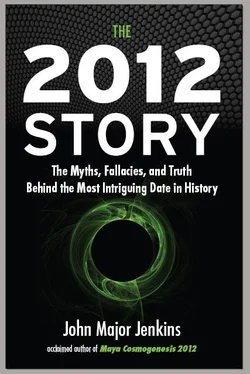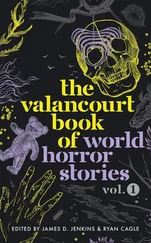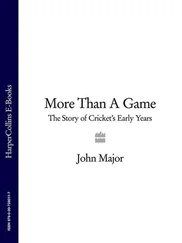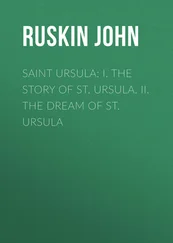HEALING MODES OF BEING WHOLE
There are many ways to awaken a sense of wholeness, of being and acting in congruence with the unfolding of life. This effort is predicated on the understanding that the tower of ego is an unsatisfactory place to be, that it has gone rogue, turned pathological, dislocating human beings from their humanness. There are many ways to catch a glimpse of essential wholeness, the unity consciousness of One Hunahpu restored, and different temperaments will benefit from different approaches. I’ll discuss three methods representing three broad categories: sacred plants (initiation/transforming), meditation (knowing/being), and service work (action/doing). Ideally, all human beings should have some direct experience with all of these areas.
In the first example (sacred plants), the concept of initiation is centrally important. Sacred plants and shamanic techniques of transforming the consciousness are not the only methods that can result in an initiatory experience; others include any safe initiatory process that supplies the seeker with a death-rebirth journey in which the egoic reference point is temporarily suspended. I’ve chosen sacred plants (psychoactive tools of shamanism such as peyote, psilocybin mushrooms, ergot) for two reasons: (1) they have a prominent role in the 2012 discussion, both popular and academic; and (2) they informed the beginnings of Western philosophy.
Shamanic rites of initiation are intended to induce a transformative death-rebirth experience for the initiate. Purification of irrelevant dross, negative thoughts and emotional patterns, and unhealthy intentions is the goal of these rites. In addition to the all-encompassing rite of passage induced by the use of sacred plants, which Stanislav Grof likens to a death-rebirth experience, these traditional ceremonies usually also involve fire transformation. From Siberia to Amazonia, shamanic fire ceremonies follow the same patterns and share the same intentions.
The [shaman’s] mastery of fire also often includes control over symbolic actions, especially initiation rites that “cook” candidates or subject them to the heat of incubation. The shamanic master of fire is responsible for transformative processes burning at the core of spiritual life: the symbolism at the center of the hearth or social units, community groups, all civilized life, and the cosmos itself… the shamanic experience of consumption correlates directly with ecstasy. Consumption by fire signifies the death inflicted by supernatural powers during ecstatic trance. Ecstatic death consumes the spiritually awakened or inflamed human being, who is transported to an illumined state of consciousness. 2
Subjecting initiates to “the heat of incubation” pertains to the spiritual heat that transforms; the imagery here is reminiscent of that used in alchemical transformations. Fire is, after all, the great transformer. These shamanic rites survive primarily in indigenous societies that draw time-tested methods for transformation from the storehouse of what works . Curiously, their practices directly parallel initiatory trials in Western mystery schools and Roman Mithraism. A long lineage of more ancient wisdom schools goes far back to Egypt (for example, the Hem-Shu school), not to mention shamanic schools in ancient China. These effective transformational rites survived as an underground stream of esoteric knowledge, passed down as ancient lore to initiates who would visit their shrines and oracles. The oracle at Delphi, for example, was one of many conduits of initiatory wisdom that were visited frequently by Plato, Socrates, and other Greek thinkers. Historically, Egyptian mystery schools influenced Greek thought as a result of pre-Socratic philosophers having interactions with Egypt and the Middle East. These visits by Greek thinkers to the founts of ancient Egyptian wisdom triggered the Greco-Hellenic renaissance. The mysterious figures of Parmenides and Pythagoras occupy an early place in the formulation of Greek philosophy, prior to Plato. Western philosophy and politics, it should be recalled, look to Greek philosophy as their prototype.
For the Greeks, oracles served much as shamans do for indigenous societies, as intermediaries between this earth realm and a supernatural higher source of knowledge and information. The oracle at Delphi was associated with a goddess and snake cult, evoking the Hindu doctrine of the kundalini “serpent energy” that rises and awakens spiritual seekers. The primary mystery religion in the Greek world was enacted annually at Eleusis for more than a thousand years. It finally succumbed to the destructive intolerance of Christianity around 300 AD. The practices of this fascinating initiatory school were shrouded in mystery and its participants were forbidden to reveal what they had seen inside the Mysterium (the Sacred Theater). Its graduates were the founding minds of Western thought, including Plato and Socrates and many other Greek philosophers and statesmen. Modern scholars interested in the role of psychoactive plants in religion have successfully reconstructed long-lost aspects of the Eleusinian Mysteries, finding that the sacrament used in the visionary mystery play enacted at Eleusis was a psychoactive elixir called the kykeon. 3One of these authors, Carl Ruck, has gone on to explore more examples of the use of psychoactive substances in connection with Christian symbolism and the Greek Classical world. 4The larger implications of the forgotten sacraments of religion are admirably explored in Irvin and Rutajit’s The Pharmacratic Inquisition: Astrotheology and Shamanism . 5
Stated simply, at Eleusis the founding fathers of Western philosophy and science were radically informed by a vision induced by a psychoactive elixir whose chemical analogs are components of LSD. They all experienced initiatory visions that were described as an illumination from within, a revelation. A teaching story or mystery play was performed, which may have been the famous Myth of Demeter that involved the origin of the seasons and the necessity of sacrifice to the chthonic underworld lords so that light, the sun, could return every spring. Sound familiar? Sacrifice, transformation, underworld lords, and renewal are all present in this mythos, echoing the archetypal outline of the Maya’s Hero Twin Myth. Plato wrote of underlying “Ideas” (equivalent to archetypes) that are the essences behind all created Forms. He thus anticipated the existence of inner psychological archetypes more than 2,300 years ago.
There are strange stirrings in the other writings of Plato, however, that suggest a reactive counterresponse to his mystery religion experience. Another thread of Greek thought was the striving for order, to schematize nature and the mystery of life, and this truly was the beginning of the Western descent toward modern reductive science. Plato (born in 427 BC) was preceded by the mysterious figure of Parmenides, who was active around 475 BC. He was a shaman-poet who experienced a mystic initiation in a Plutonium (the cave-chamber of Pluto, lord of the underworld), and there in the darkness he saw the light. He wrote an ecstatic anagogical mystery poem that has lost much of its original sense and transformative punch through dozens of translations. Parmenides was not unlike a Maya shaman who descends into a cave to engage the underworld journey and, there in the darkness, awakens the inner vision to perceive the intangible truths that underlie manifest reality.
Classical scholar and Perennial Philosopher Peter Kingsley has recovered the long-lost true story behind the teachings of Parmenides and, most unfortunately for the history of Western thought, how he was misunderstood by Plato. 6Kingsley argues that a fundamental misstep occurred at the dawn of Western civilization. The esoteric initiatory mystery teachings of Parmenides were appropriated and distorted by Plato and Aristotle, who merely demystified his words. This desacralization of reality has become the defining hallmark of Western politics and secular humanism. What’s wrong with the essential Mystery? It belongs to its own ontological category of experience, so why should one even attempt to demystify it? You can’t solve a mystery, but you can suck the transformative power out of it by labeling it “not real.” Kingsley encourages Western science and philosophy to back-engineer its true origins and reinstate the original Parmenidean teaching, that in the darkness of the fecund womb of the initiatory cave, true knowledge awaits one who sincerely seeks to understand reality. This is how Western science and philosophy can reclaim its nondual roots, to awaken its forgotten indigenous mind.
Читать дальше












